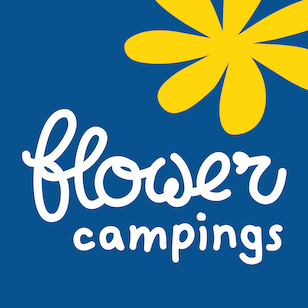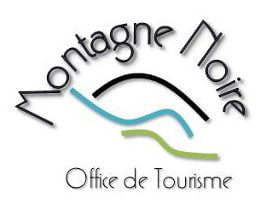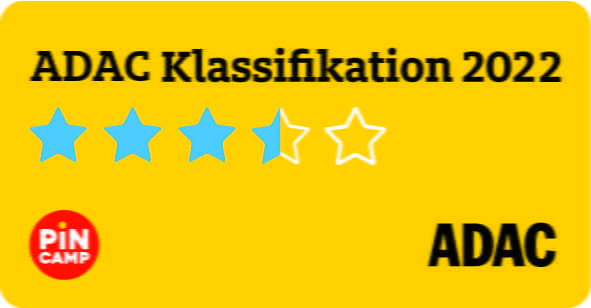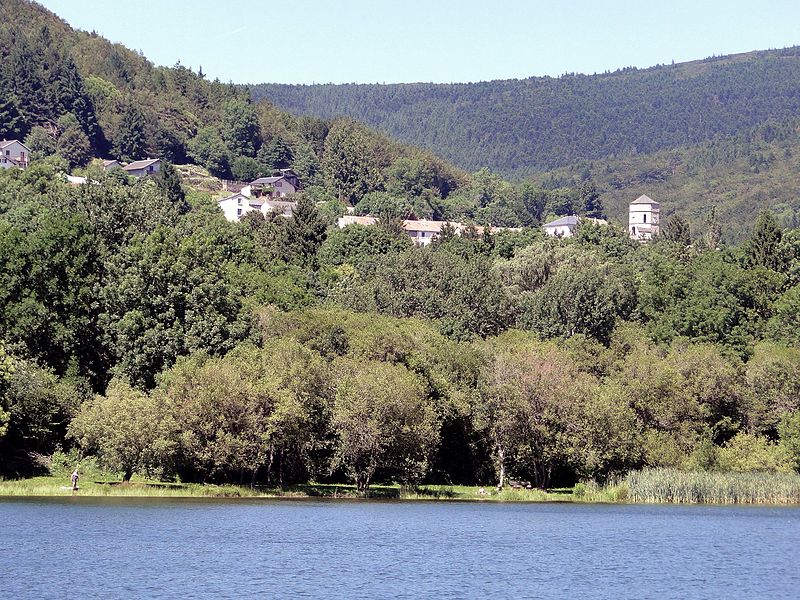
The village of Pradelles-Cabardès lies at the foot of Pic de Nore, the 1211-meter-high peak of the Montagne Noire. For a long time, until the mid-19th century, the town’s climatic characteristics enabled its inhabitants to develop ice cream production for the entire region.
We poured the snowdrifts into circular moulds before compacting it to make to form a compact block, then covered it to a height of 1 metre with beech leaves are rot-proof.
In summer, when ice was essential for preservation, the cooler was opened to extract the ice blocks, which were then placed on the “bourra” (a piece of jute cloth), also lined with beech leaves. Then the whole thing was sewn together to make the ice-loaf airtight before delivering it or putting it back in the ice-box for delivery, which was done at night by cart.
Whoever The first to come up with the idea for this business was Pierre Piquemol in 1849. He was soon imitated by many inhabitants, and the development of this industry became prosperous. The ice loaves reached the narbonnais country, the country carcassonnais and the Mazamet and Castres region. As the rail moves forward, the ice on the Pradelles was delivered to major cities in the southwest.
This activity flourished, but fell apart during the First World War, when the Horses and men were requisitioned, and the operation came to a definitive halt in 1927.
Today, the The icehouses have been listed as historic monuments since 1986.
Several signposted circuits have been laid out around Pradelles-Cabardès, some of them go through the coolers.
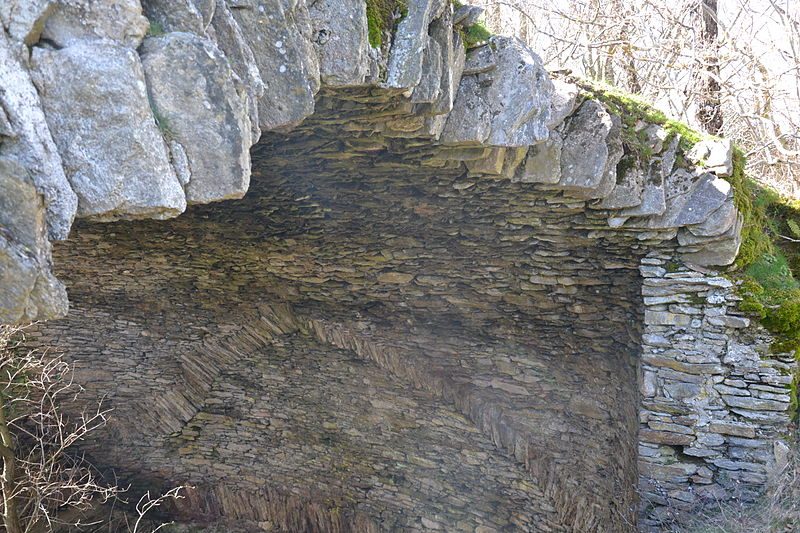
Finally, don’t miss not the 14th-century Saint-Jean-Baptiste church. Original architecture is composed of a five-sided apse, a four-sided nave bays and six side chapels. Its bell tower is octagonal.
A great day out during your stay at camping Le martinet rouge. You can picnic in the special picnic area around Lac de Pradelles.
Photo credits: [[File:Lac de Pradelles, Aude (5).jpg|Lac de Pradelles, Aude (5)]]
METGE Jean [CC BY-SA 4.0 (https://creativecommons.org/licenses/by-sa/4.0)]
https://commons.wikimedia.org/wiki/File:Pradelles-glaci%C3%A8re1.jpg
Lastours and its four Cathar castles
Lastours, a major site in the Pays Cathare, was the main lock of the Cabardès region. It’s close to Carcassonne, just 20 km from your campsite.
This exceptionally rich archaeological site features 4 castles built on a rocky spur 300 m above sea level: Cabaret, Tour Régine, Surdespine and Quertineux. These buildings have been constructed according to the structure of the rocks and are not connected to each other.
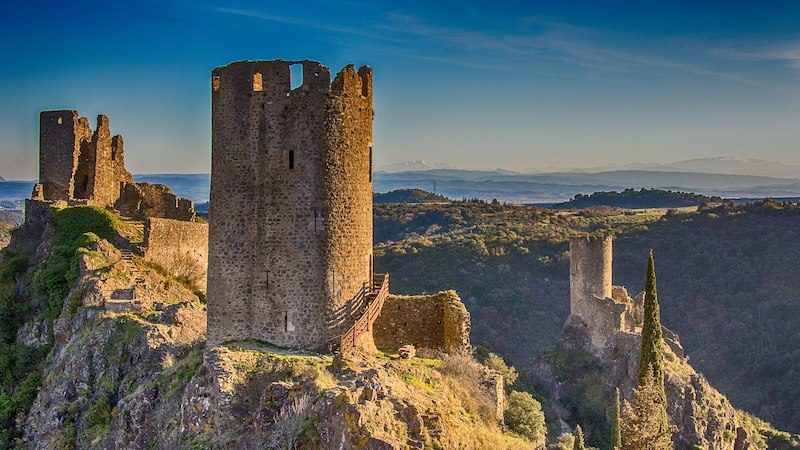
They dominate the village, which stretches out on the hillsides along the Orbiel river, while the medieval village of Castrum de Cabaret nestles at the foot of the citadels, in the hollow of the valley.
This medieval treasure was unearthed during archaeological excavations, bringing it out of oblivion and bringing back to life the time of the Albigensian Crusade, a disastrous page in the history of Cathar country.
Indeed, the lords of Cabaret were linked to Catharism and were attacked by Simon de Montfort, leader of the royal armies. After the defeat of the Cathars in 1229, the castles were rebuilt as royal fortresses.
During your visit, you can see “Lastours, 4000 years of history”, the archaeological exhibition featuring 25 years of archaeological excavations.
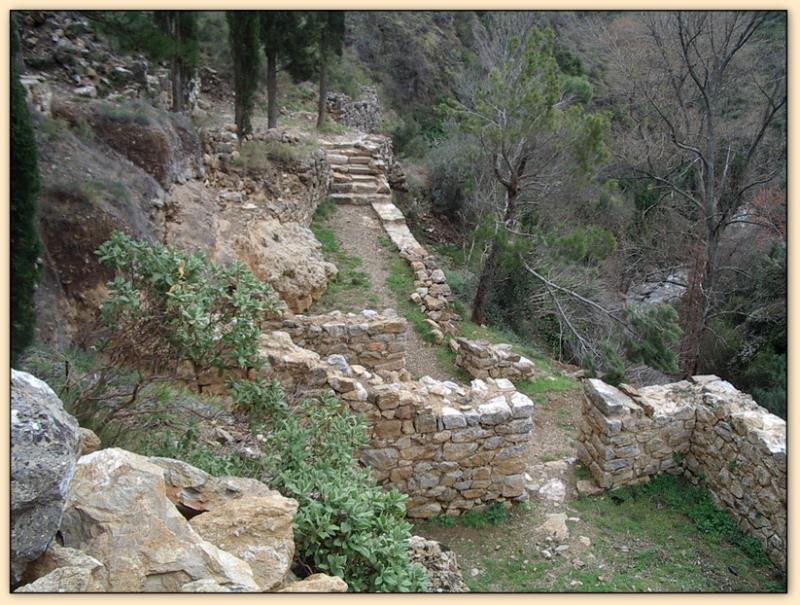
Château de Cabaret has been restored. A team of stonemasons and masons specializing in historic monuments worked on the tower of the Château de Cabaret. The walls were repaired, the stones cleaned and brushed to restore the monument to its former glory. The tour of the Lastours site is divided into two parts:
First of all, the belvedere, which offers a breathtaking view of the Montagne Noire, the ancient mines of Barrenc and, of course, the historic complex of the four citadels of Lastours.
Then the ascent to the châteaux along a specially prepared path that starts at the old textile mill.
This walk will also be an opportunity to discover a “fauna and flora” trail, which accompanies visitors and informs them about the site’s natural environment.
If you love history, geology and botany, Lastours is the place to be during your stay at vote camping. Book your accommodation
INFORMATION:
22 route des 4 châteaux,
11600 LASTOURS
Tel. +33 4 68 77 56 02
campsite near Lastours
Castelnaudary in the Aude department
The famous city of cassoulet is just 38km from your campsite in the Aude. In addition to this gastronomic stopover, the town has many surprises in store for its visitors.
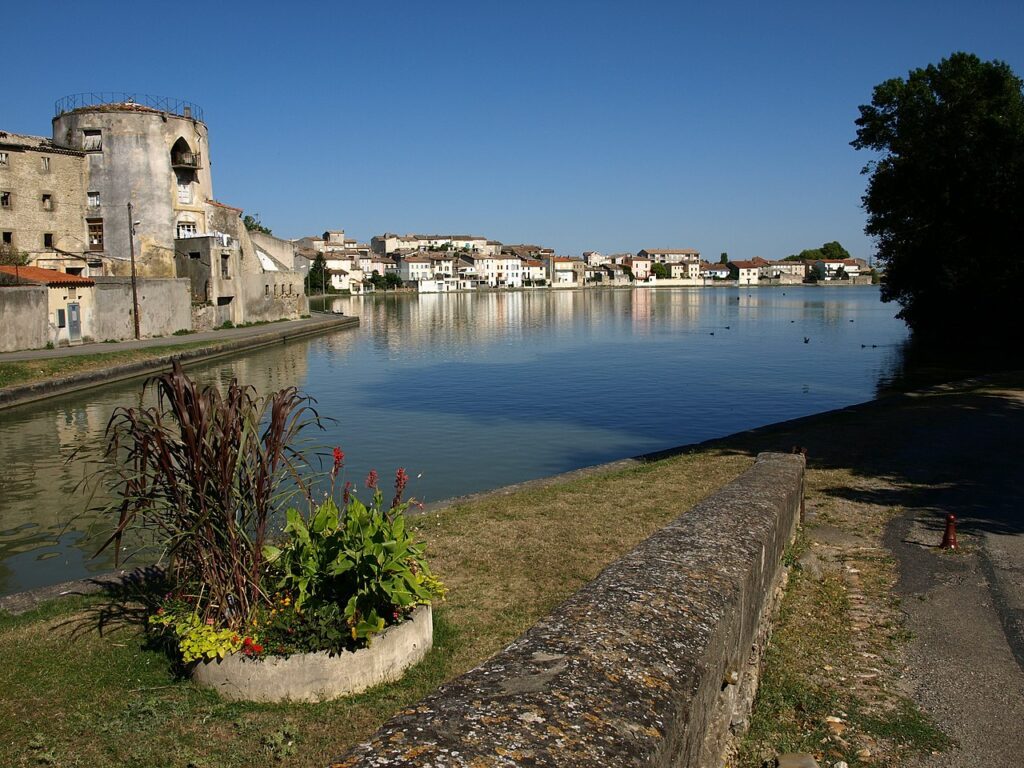
With the midi canal running through it, Castelnaudary, a fortified medieval town close to Carcassonne, is a pleasant place to take a stroll and discover its rich heritage.
Built around the “ Castellum Novum Arri” (now the Musée de Lauragais), the town was the cradle of Catharism, and became a target for crusader leader Simon de Montfort, who saw the conquest of Castelnaudary as a means of weakening the Count of Toulouse, a fervent defender of the Cathar faith. He took the town and had to endure a siege by the Count of Toulouse, who had come to retake the city. It was a failure for the troops of the Count of Toulouse, but was retaken in 1221 by the Count before Catharism finally collapsed with the capture of Montségur.
During the Hundred Years’ War, the town was destroyed by the Black Prince, son of the King of England. It wasn’t until the reign of Henri II, and especially his wife Catherine de Médicis, that the Cathar province once again became an important center. In fact, it is a powerful city, concentrating administrative and judicial powers. She erected the Présidial, a civil and criminal court, which led to the installation of numerous magistrates in the town.
In the 17th century, the town experienced an episode of the Fronde, but in this century of great change, Castelnaudary welcomed the construction of the royal canal that crossed the Languedoc region. This would become the famous Canal du Midi, visited by thousands of people. The panorama of the city is breathtaking: from the little port, across the Pont Vieux, the Grand Bassin opens up, leading to the Pont Saint Roch and finally to the locks.
A historic town in the Aude department
You’ll discover many relics of the town’s glorious past as you stroll through the old town: the impasse des Boutiquiers, the former Carmes convent, private mansions and the Grand Bazar in the town hall…
On the large Place de Verdun, a beautiful covered market stands witness to the town’s transformation into a bastide town in the 14th century. Today, restored, it offers a peaceful setting around its fountain and plane trees, while being very lively thanks to the many stores that have replaced the boutiques of the herbal market…
Continue your tour with a visit to the church of Saint Michel, originally a Romanesque fortress temple, now an imposing Gothic edifice, with nine side chapels and a high pyramidal spire rising to 50 m. The bell tower boasts a 35-bell carillon, one of the largest in France. Inside, the beautiful, listed organs date back to the 18th century.
On your way out, admire the ten exceptionally well-crafted Passion of Christ panels in the small Notre Dame de Pitié chapel.
Castelnaudary, the world city of cassoulet
Finally, don’t miss the opportunity to taste the famous cassoulet… which, according to legend, was invented during a siege and was initially made with beans and meat, to give the fighters back their strength, who were in fact victorious. beans having replaced broad beans in the 16th c.
Discover here the real recipe of Cassoulet de Castelnaudary
On the last weekend of August, the town pays tribute to its favorite dish with the great cassoulet festival.
It’s a popular family event with free music and tastings all day long…
Many reasons to spend a day in Castelnaudary during your stay at “le Martinet” campsite.
Click here to book your cottage or camping pitch.
ARAGON in Cabardes
Your campsite near Aragon. Just 8 km from your campsite in the Aude, Aragon is a visit not to be missed.
From the top of its rocky outcrop, this small village overlooks the Trapel and Valette streams, harboring vestiges of its medieval past. In addition to its charming little streets, Aragon boasts a late 16th-century castle that once belonged to the Lords of Aragon, but because of their support for the Cathar cause, they were dispossessed of their domains by the King of France.
It has been transformed over the centuries and now boasts a number of fine features. Of the original medieval building, only one section of wall is still visible, but it blends in with the rest of the facades. It features a 16th-century door.
This elegant building is privately owned but beautifully restored, with beautiful mullioned windows, and is well worth a visit in the heart of the old village.
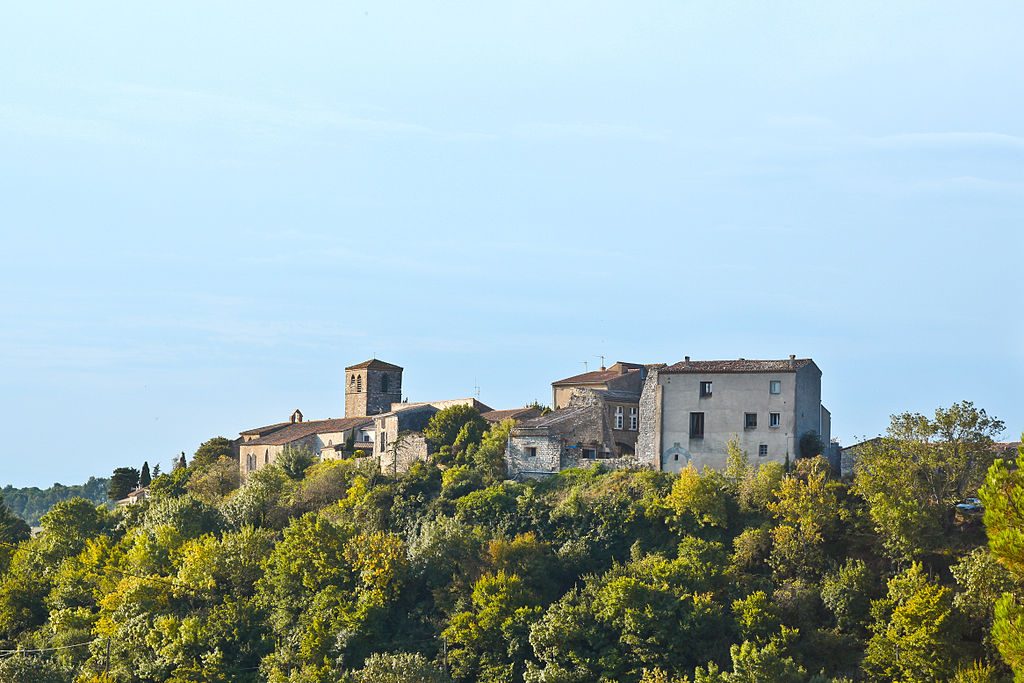
Aragon also owes its fame to the 14th-century painted woodwork in the church of Sainte Marie, recently discovered when the church was refurbished. What a surprise it was for the craftsmen when they removed the false cross-beams that had been installed in the 19th century, obscuring the roof structure: they discovered painted frescoes whose fresh colors had been exceptionally well preserved. These paintings, with their traditional medieval decorations: bestiaries, coats of arms and plant motifs, were uncovered.
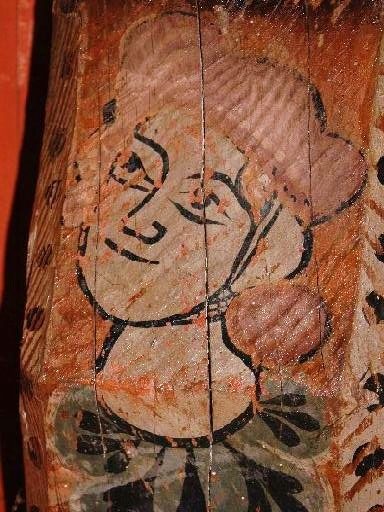
The southern Gothic church of Sainte Marie is set among the houses of theold castrum, and still has a door dating back to the time of its construction (the bell tower door).
In the center of the village stands a 16th-century stone cross, decorated on both sides. On the same square, known as Place de l’abreuvoir, you can see a granite drinking trough with the charm of yesteryear.
Finally, the remains of two mills bear witness to Aragon’s rural past.
The dry-stone area
It’s an interpretive museum showcasing ancestral dry-stone building techniques, one of the region’s living heritages. Guided by a film, visitors can follow the evolution of buildings (terraces, huts, walls, etc.) through the economy of the area.
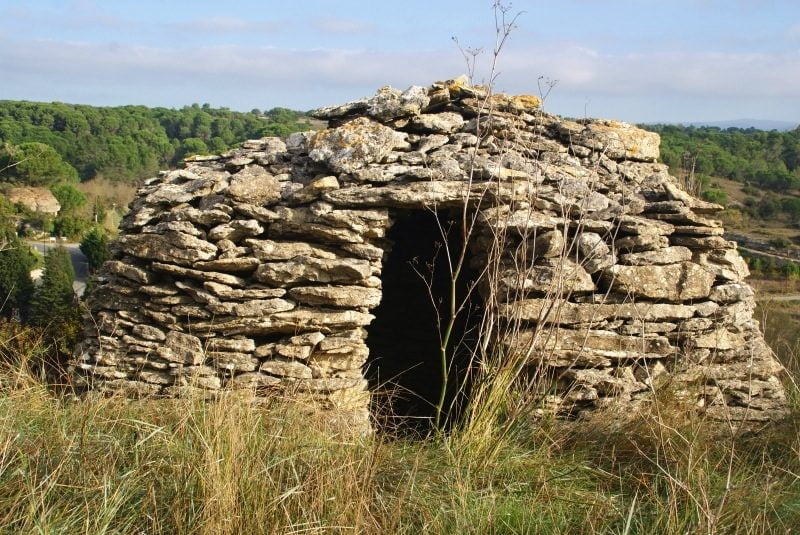
In this particular garden, you can admire discoidal stelae, funerary monuments dedicated to Christians, which probably originated in the ancient cemetery. Replicas have been installed in the garden (11). A medieval garden, modelled on those found near abbeys and castles, has also been laid out on rue du Paro. In these gardens, plants were grown for a variety of purposes: medicinal, dietary, utilitarian (from which dyes or fibers were extracted) and liturgical (used for rituals).
Aragon promises a pleasant visit, a journey back to medieval times, but also the discovery of “dry stone” landscapes, shaped by man over the centuries.
Book your camping pitch near Aragon – Book your vacation accommodation in Aude
camping near Aragon en Cabardes
Photo credits: image village Aragon
Meria z Geoian [CC BY-SA 4.0 (https://creativecommons.org/licenses/by-sa/4.0)]
/Image fresco painted wood and dry stone
Campsite near Montolieu
The village of Montolieu, a village of books and the graphic arts
The Village de Montolieu is a charming village in the Aude region of Languedoc-Rousillon, just 20 minutes from the medieval city of Carcassonne.
Books are king in the village of Montolieu
Montolieu, a village of just over 800 inhabitants near the campsite, has been recognized as a village of books and graphic arts since 1989. Every year, Montolieu attracts over 52,000 visitors to discover the many booksellers, second-hand booksellers and craftspeople involved in books and the arts. Numerous galleries and exhibitions enable painters, sculptors and photographers to express themselves through their work. The Musée des Arts et des Métiers de Livre de Montolieu is a must-see when visiting the village.
Like a book, it’s sometimes hard to leave the village of Montolieu…
Visiting Montolieu also means strolling through the narrow streets of the village, taking the time to leaf through the books on display in the small bookshops or relaxing on a terrace in the charming village square.
Artists and craftsmen of Montolieu, village of books and arts
Artists and craftsmen abound in Montolieu, a village of books and graphic arts. Painters, photographers, sculptors, … like to show visitors around their studios. In Montolieu, artists and craftsmen regularly organize exhibitions for the general public. Experienced instructors introduce participants to a range of bookmaking and graphic arts techniques.
What’s more, you’ll be able to find an ideal, original gift or treat yourself even better.
List of artists and craftsmen in Montolieu .
- Calligraphy workshop
Lucile Gesta – Calligrapher
Musée du Livre et des Arts graphiques, 11170 Montolieu, 06 87 10 27 43 - Workshop – La Barbacane gallery
place de la République, 11170 Montolieu, 06 81 17 20 90
Nathalie Louveau
Painter illustrator
Mail: nathylouveau@yahoo.fr - La Forge de Montolieu
11170 Montolieu
Charles Cowen – photographer
Reports, nature, architecture, crafts, portraits, prints, framing on various supports
www.forgedemontelieu.com - Le Saint Eloi Route de Fraisse
11170 Montolieu , 04 68 79 48 15
Christian Gohay – photographer
Reports, events, weddings, portraits, reproductions, architecture, semi-aerial photos,
portable studio
www.christiangolay.com - Bertrand Taoussi – photographer
Rue Saint-André, 11170 Montolieu , 04 68 78 87 57
Fine art printing – digigraphy nature – landscape – creations – image banks – professional studio-
reports – animations – events – mobile studio
www.taoussi.com - Elsewhere, here and next door.
Nathalie Nahoum – photographer-“imageuse
Place Jean Guéhenno , 11170 Montelieu, 06 30 26 81 63
Photo walks – introduction to photography – self-publishing of photo books on the Aude – landscape – reportage – image bank
www.mi-ange-mi-demon.net - Caricature workshop ( Laurent Malard )
Route de Saint-Martin , 11170 Montelieu, 04 30 34 13 38
www.caricature-carcassonne.fr - Chris and Francis’ Workshop
Rue du 11 Novembre , 11170 Montolieu , 06 07 26 40 86
Sculptures – silver paintings-photographs – landscape
www.chrisandfrancis.com - L’Arrière cuisine
1 rue Bastlé , 11170 Montolieu , 04 68 25 29 79
Sculpture and painting workshop
Individual/group practical workshop
Mail: guillaume.sculpture@yahoo.fr - Harillo
rue du 11 Novembre 1918 , 11170 Montolieu , 04 68 79 78 31
Painting – interior decorator
www.casas-faure-cabanova.com - Carole Foissier – Art paper
23 rue de la Mairie , 11170 Montolieu , 04 68 78 09 93
Carole makes vegetable paper
Several traditional plant paper processes
Oriental processes
The pre-Hispanic process
www.carolefoissier.com - The artist’s studio “Côté Jardin” ( Geneviève Gourvil )
2 place Jean Guéhenno , 11170 Montolieu , 04 68 78 08 61
Permanent exhibition – painting – poetic art – prints
www.gouvilgenevieve.com - Figurative painter Bruno Aimetti
1 rue Saint-André , 11170 Montolieu , 06 51 37 45 58
www.aimetti.com
To visit this magnificent village, book your pitch or mobile home at Le Martinet Rouge campsite now.
Camping Montolieu, campsite near Montolieu[/vc_column_text][/vc_column][/vc_row]
What to see and do in Carcassonne?
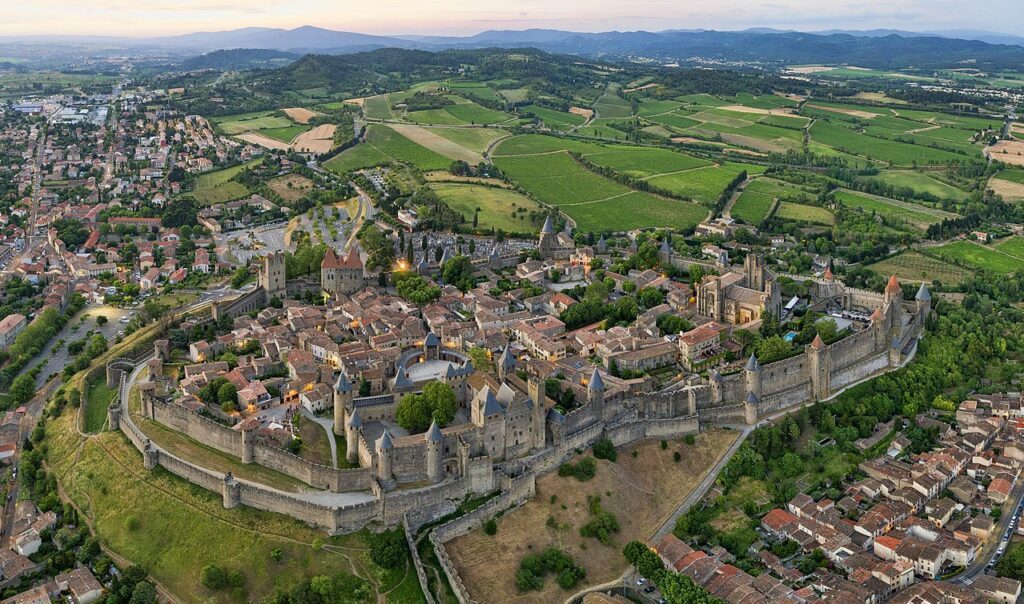
Your Le Martinet Rouge campsite has the great privilege of being close to one of France’s most beautiful cities: Carcassonne.
This medieval city was built on a site known since Neolithic times as a crossing point between the Mediterranean Sea and the Atlantic Ocean.
Bordered by two rivers, theAude and the Fresquet, it is also home to the Canal du Midi.
The town of Carcassonne is made up of 2 distinct parts:
1. the medieval city in the upper part
2. Bastide Saint Louis – the lower part of the town center, home to local life.
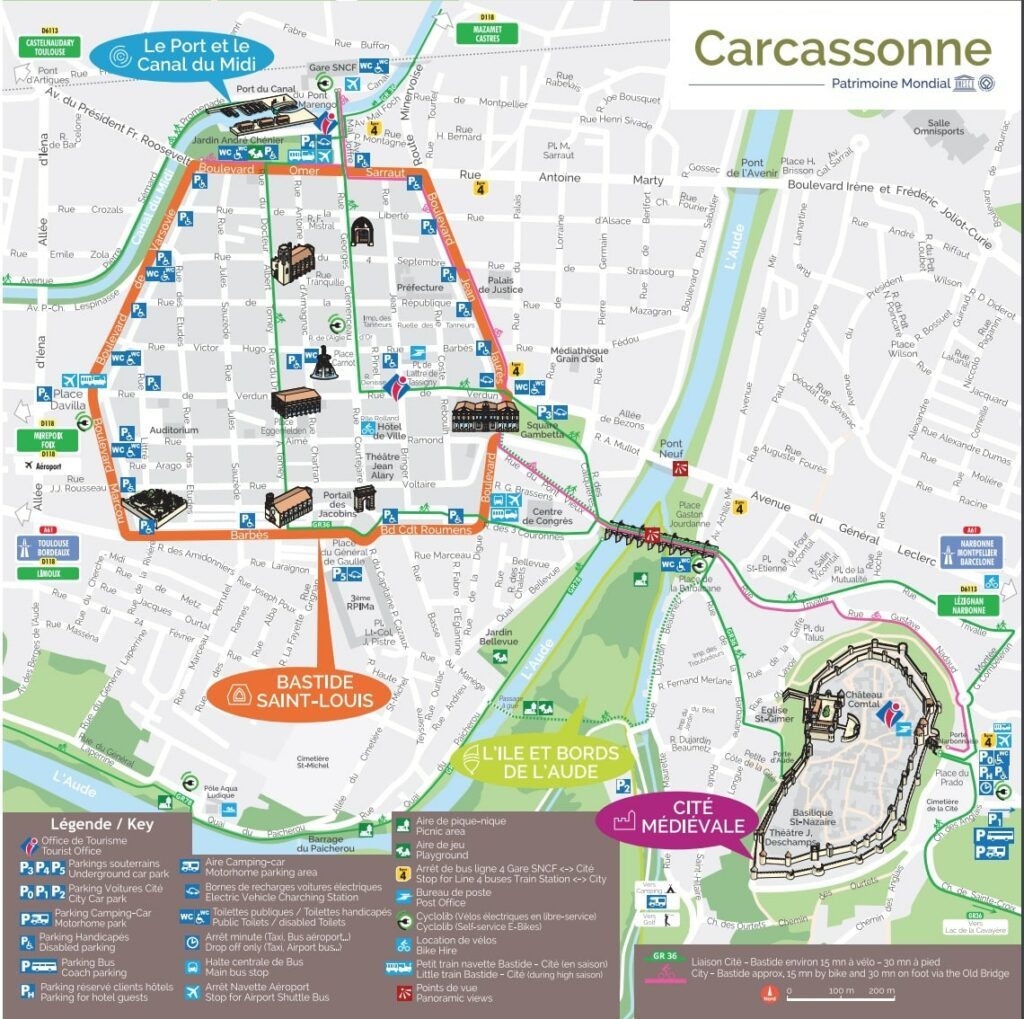
Carcassonne, a little history…
This strategic site has been occupied for a very long time, and Gallic tribes founded an oppidum here as early as the 6th century. The city was successively occupied by the Romans, Visigoths, Saracens and finally the Franks. During the feudal period, the Trencavel family took charge of the town until the 13th century, when it became a very important city in the Languedoc region.
With the Trencavel family protecting the Cathar religion, the town was not well regarded by Pope Innocent III, and soon became a target for Simon de Montfort, who laid siege to the town, which fell into the hands of the royal domain in 1224. Ten years under the yoke of Simon de Montfort, who set up a court of inquisition, incited the people of Carcassonne to revolt. It was severely repressed by Saint Louis, who expelled the city’s inhabitants. They settled on the other bank of the river: La Bastide Saint-Louis, and a new town was created.
The new lower town grew thanks to the textile industry and competed with the city, which lost its power over the centuries, although it retained its major military role as a defense against the kingdom of Aragon. The signing of the Treaty of the Pyrenees with Spain saw this role fall into disuse in 1659, and by the 17th century, the old town was no more than a poor, outlying district of the flourishing center of the new city, which saw its trade flourish.
From then on, the lower town took over, with the transfer of all the city’s institutions, continuing its development right up to the Revolution. But English industries were competing too fiercely with Carcassonne’s, and the cloth mills closed down as poverty gradually spread.
Carcassonne has risen from the ashes, thanks to a city miraculously preserved in the early 20th century. Awareness of the need to protect heritage began to grow, and the historic monuments departments, under the aegis of Prosper Mérimée, began to organize themselves to enhance the value of historic buildings.
The city was then in ruins and the first restoration work was launched. It took 50 years for the city of Carcassonne to regain its former majesty and 13th-century silhouette, much to the delight of the many visitors – 4 million every year – who flock to admire its ramparts.
1. Carcassonne medieval city
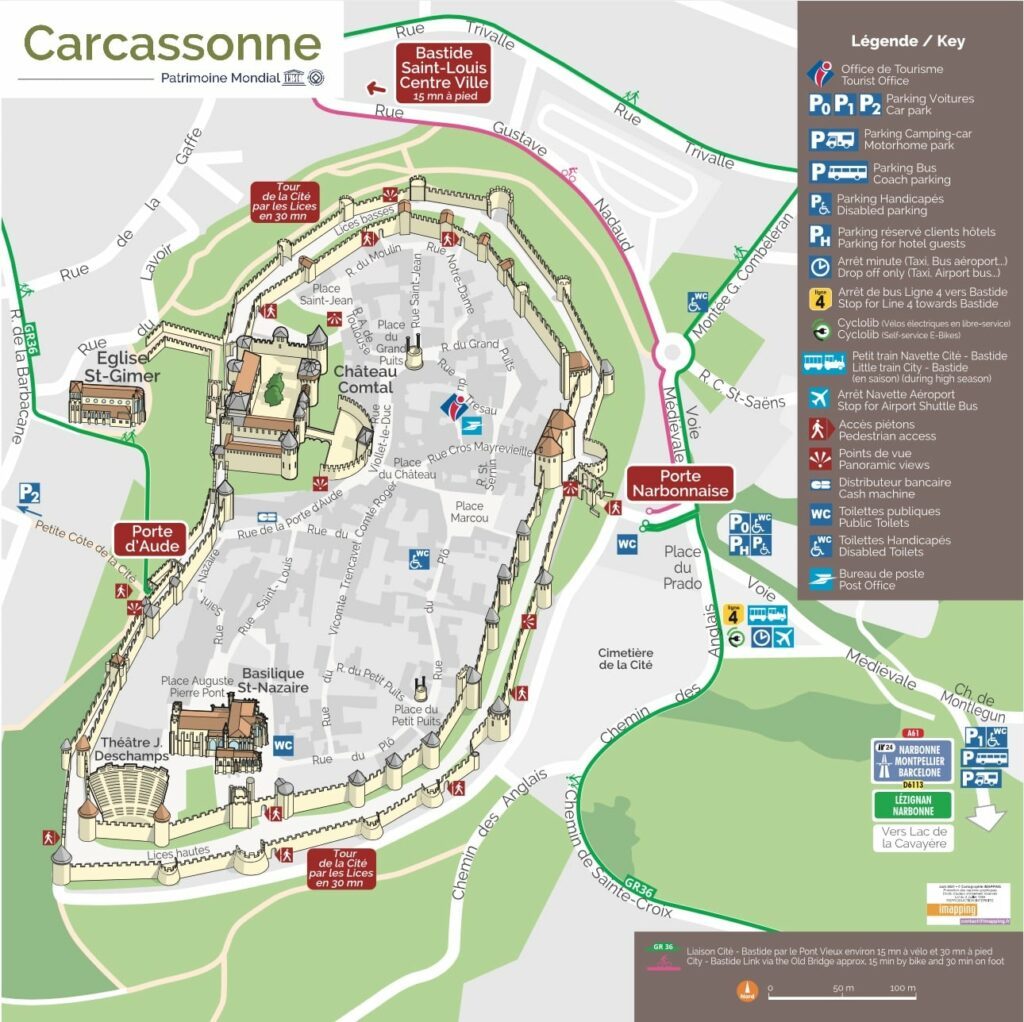
Still inhabited, the city is surrounded by 3 km of ramparts and totals 52 towers, accessed via the Porte narbonnaise to the east, a monumental fortification dating from 1280 and comprising two enormous towers, and the Porte de l’Aude to the west, with its ramp that has hosted the filming of many movies, including “Les visiteurs”.
Enjoy a stroll along the lices, a walk around the ramparts offering splendid views of the Montagne Noire and the Pyrenees.
How to get to La cité médiévale
3 paying parking lots are available:
Parking P1: 400 meters from the medieval city, Porte Narbonnaise entrance
Telephone: 04 68 77 73 11
Parking P2: Rue Dujardin Beaumetz, porte d’Aude Parking de la Cité
Carcassonne map Parking guide
Visit the medieval city
You can take a self-guided tour and immerse yourself in the city’s medieval world. The Cathar city is as mysterious and enchanting for children as it is for adventurous adults and history buffs. We recommend a guided tour with the Tourist Office guides for a unique experience in discovering Carcassonne’s hidden secrets.
Visit Carcassonne with a virtual reality helmet!
From 2021, a new attraction will be on offer: visit the Cistern Tower, put on a virtual reality helmet and immerse yourself in the history of the Cité, from its creation in Roman times to its transformations from the Middle Ages to the present day.
Use the free “CARCASSONE INTERRACTIVE” app available on Appstore or Google play
You’ll find an escape game, a treasure hunt, a guide to themed tours and museums. Another way to live the medieval experience.
What to see in Carcassonne medieval city
The Chateau Comtal
This fortress, home to the Viscounts of Carcassonne, dates back to the early 12th century. Part of its keep has been preserved and it is surrounded by a fortification with curtain walls, round towers, an entrance châtelet and a barbican. A visit to the château provides access to the ramparts and houses a lapidary museum and an exhibition on the restoration of the town, mainly by Viollet-Leduc.
Saint-Nazaire Basilica
Of Romanesque origin dating from the 11th century, this church boasts a remarkable collection of stained glass windows and sculptures, ranked among the finest in the south of France.
But Carcassonne is also a city with a rich heritage beyond its walls:
The town’s great prosperity was reflected in the many mansions that flourished here between the 14th and 18th centuries, whose sumptuous facades and massive doorways bear witness to the wealth of the area in the heyday of the textile industry.
2 La Bastide Saint-Louis
It is located below the medieval town, which can be reached in 15 minutes on foot.
Getting there and parking
Carcassonne has a number of free parking lots in the town center (please note that they are usually fully occupied in high season).
Parking du Dôme, Quai Bellevue, boulevard de Varsovie in front of Collège Bastion
The 3 paying parking lots :
Parking P3: Gambetta (tel: 04 68 71 34 11)
Parking P4: André Chénier (tel: 04 68 72 30 10)
Parking P5: Jacobins (tel: 04 68 47 64 83)
Carcassonne map Parking guide
Monuments and museums in the Bastide Saint Louis
Carmelite Church
This is the former chapel of the Carmelite convent. It is in the Languedoc Gothic style. Its distinctive features include capitals decorated with foliage or historiated motifs. It comprises a single nave 12m80 wide and 17m long, flanked by ten chapels.
Inquisition Museum
The Museum of Fine Arts
Open from September 15 to June 15, and every 1st Sunday of the month thereafter, this popular museum showcases paintings and ceramics from the 17th century to the present day. A varied selection of European art through the ages. If you get the chance, don’t miss this magnificent Carcassonne monument. Guided tours for groups by appointment.
Further information: tel: 04 68 77 73 70
An overview?
Saint Michel Cathedral, a remarkable religious building in Carcassonne
Like the Eglise des Carmes, this monument is in the Languedoc Gothic style. Originally a church built in the 13th century, it became a cathedral in 1803 and, after a fire in 1849, was restored by Viollet le Duc, one of the most famous French architects of the 19th century.
It’s a cathedral of relatively simple construction and sober decoration. It comprises a 20-meter-high nave, flanked by side chapels. The choir features 14th-century stained glass windows. A large rose window, 8 meters in diameter, adorns the façade, and the cathedral boasts a massive bell tower.
The treasure museum of Notre Dame de l’Abbaye
103 rue de Trivalle
Discover an important Bishop’s collection. Works from the major and minor seminaries left over from the French Revolution
These collections include objects of worship, manuscripts, incunabula (the ancient stock of the major seminary library) and liturgical vestments. Some of these objects, initially confiscated, were returned in the years following the Separation and the break-up of the Concordat. Since then, new donations have been made by private individuals and religious congregations.
This museum is a pleasant surprise in Carcassonne.
Saint Vincent Church
This magnificent religious building is in the Languedoc Gothic style, with a wide nave (20.25 m) and a vast vault (23.5 m). The 54-meter-high octagonal bell tower, with its square base, houses a carillon of 47 bells. To get there, you have to climb a staircase with 232 steps (access for a fee)!
The reward for this effort is a breathtaking view over the whole of Carcassonne.
Works of art in the church: 17th-century paintings and lectern, by Gamelin, Nicolas Mignard and Pierre Subleyras. 15th-century rose windows and stained glass.
Carca’ Pass advantage(s): – €1.00 per person over 15/ free for accompanied children under 15
Maison des Mémoires – Joe Bousquet Center
Visit the home and works of surrealist poet Joë Bousquet (1897-1950).
Very popular at the beginning of the 20th century, he was paralyzed and received many painters, poets, philosophers and other creative artists in his bedroom. Discover the premises as they were during his lifetime, with a permanent exhibition + 2 temporary exhibitions in Spring and Autumn.
Open all year except Mondays – Sundays and public holidays.
The Jacobain portal
The last of the 4 gates that surrounded the Bastide (lower town) to control the entrances on its right-hand side, a remnant of the original rampart can be seen.
Le Pont Vieux
Don’t miss this 14th-century medieval bridge. Until the 19th century, it was the only link between “the 2 Carcassonnes”: the Bastide Saint Louis and the medieval Cité.

Reserved exclusively for pedestrians.
Built between around 1315 and completed around 1320, a special tax was introduced to finance its construction. With funding arriving gradually over time, the architecture of the Carcassonne bridge has evolved significantly over time. The work was carried out arch by arch. The 12 semicircular arches have unequal opening diameters: their lengths vary between 10 and 14 meters.
Joseph Poux, in his book “La Cité de Carcassonne – Histoire et description”, explains: “The city of Carcassonne – History and description”. The bridge was divided into two parts by a stone arch, founded on a front and a backbay, which formed the boundary between the two communities of Cité and Ville-Basse. It was here that peace treaties were signed following the internecine dissensions that often troubled the inhabitants of the two Carcassonne towns.
The bridge’s appearance has only changed since 1820. At the time, these were still light parapets flanked by two graceful sidewalks. We know that two of the arches collapsed in 1436, but in addition to the repairs carried out at that time, several other parts of the building were altered in 1559 and later, without losing its original character. The 1820 restoration is the one that most altered its former form. “
The Chapel of Notre Dame de la Santé
Notarized documents give us a better idea of the small chapel built with the money from Jean de Saix’s 1527 bequest to create a hospital for the plague-stricken. Supporting the door’s ogival archway, the lantern caps bear the family’s faded coat of arms. Today, we can see the date 1697 inscribed on the keystone, marking the end of the work, and the trace of the former doorway leading to the sacristy with a staircase. Acceptance of the work took place in 1698, with several disputes. The interior boasts handsome lierne and tierceron vaulting, untouched by the Wars of Religion.
Murat’s hotel
A 12th-century building, it was once owned by the De Murat family, the town’s newly ennobled and very wealthy magistrates. It was confiscated by the French state in 1792, which in the process appropriated the fine collection of books (2000) that would enrich the municipal library. In 1806, it became the episcopal see until 1906. Today, this hotel is the Chamber of Commerce and Industry. Its classical façade with pediment, balconies and wrought-iron balustrades is a typical example of balanced 18th-century architecture. See the beautiful carriage entrance to the street.
Rolland’s hotel
It was built between 1746 and 1761 by cloth merchant Jean-François Cavailhès, then bought by the Rolland family, who owned it until 1924. Since 1978, it has been the Town Hall. Like many 18th-century mansions, it features a sober facade embellished with sculptures, mascarons and wrought-iron balconies. Inside, visitors will be impressed by the monumental staircases and numerous period paintings.
The Seneschal’s House
This very old house, dating from the 14th century, has seen the emergence of raw earth elevations (a mixture of pebbles, plants, ceramics and earth), demonstrating that this building is one of the few whose foundations date from the creation of the new town in the 13th century. Having escaped the town fire caused by the Black Prince’s plundering in 1355, this is the only house to have partially preserved its medieval facade, with large geminated bays and an ogival portal.
La Maison Vines
The descendants of Pierre Vines, collector of the diocese’s sizes in the 17th century, built this large three-storey house, the top floor of which was then used as an attic. Two gargoyles are still visible at the top of the facade, which features rectangular mullioned windows. The interior still boasts beautiful French ceilings.
Also worth seeing- Hôtel Bourlat – Hôtel Besaucèle- Hôtel Roux d’Alzonne.
Other monuments dot the streets and squares, including the old grain market, the Jacobin gate and the Pont Vieux, a medieval vestige dating from the 14th century that links the town to the city.
Museums in Carcassonne
The Inquisition Museum
It presents the history of the Inquisition and the various instruments of torture used up to the Revolution.
In 1234, an Inquisition tribunal was set up in Carcassonne; Pope Gregory IX authorized the Dominican friars to be the sole judges of heresy. He takes possession of the Tower of Justice inside the city. Repression then became merciless, notably with Inquisitor Ferrier, who, without tolerance, launched particularly severe actions. So much so that the King of France was alerted by the Consul of Carcassonne to the cruelty of the brothers in charge of the Inquisition. Nothing was done, and the yoke of the Inquisition continued, despite the intervention of a Franciscan friar, Bernard délicieux, who defended the oppressed people and was in turn condemned and tortured. The hunt for the Cathars is bearing fruit and the last
Guilhem Bélibaste was burned alive at Villerouge-Termenès.
This museum reveals the dark side of our shared history, and shows just how far intolerance and barbarism can lead.
A realistic setting, supported by true stories, is used to recreate torturous practices that will move visitors and help them understand the extent to which the abuses of the Church, among others, left their mark on the Middle Ages.
Also worth discovering:
Musée des Beaux Arts- L’atelier du livre- Le center culturel de la mémoire combattante- Le Musée Trésor de notre Dame de l’Abbaye- Le Musée Jean Baubois- Le center Joe Bousquet, poète.
The School Museum
This museum provides an insight into the world of the communal school under the Third and Fourth Republics, a particularly prosperous period for elementary school. Five rooms display all the teaching aids used by the teachers. ( 1880 – 1960). A unique collection of old projection equipment is not to be missed. You can try your hand at penmanship and browse the books in the school library, taking you back to the atmosphere of a 19th-century school.
Carcassonne welcomes you and its city plunges you back into the time of the knights, with events lasting all summer long. An unforgettable family outing, just 1/4 hour from your campsite.
Carcassone’s places to rest.
The calvary garden
Ideal for taking a break after wandering around Carcassonne, it’s close to Saint Michel Cathedral. A haven of peace, the snail-shaped garden is bordered by low walls, boxwood, cypress, laurel and olive trees.
In 1825, Canon Cazaintre (whose tomb is in the garden) created the Calvaire Society, with the aim of building a private chapel. The association also built a calvary on the “Moulins” bastion, at the south-west corner of the Bastide.
Place Carnot and its fountain.
The place to be for a refreshing break under the plane trees, the square is adorned with Neptune’s marble fountain. This is where the flower and fruit and vegetable markets are held on Tuesday, Thursday and Saturday mornings.
Guided tours of Carcassonne
Carcassonne Tourist Office offers guided tours. Here are the 4 main ones:
Classic guided tour
This tour is the ideal way to discover the powerful Cité, unique in Occitanie. Discover the ramparts, the exterior of the Basilique St Nazaire and the Château Comtal.
Canal du Midi guided tour
From June to September, our guides, dressed in 17th-century costumes, present with passion and humor the history of the famous canal created by Pierre-Paul Riquet, a World Heritage Site.
Special children’s tour
Guided tour with a costumed tour guide specially designed for families with children aged 6 to 12.
Visit Treasure hunt
Legend has it that a treasure is hidden in the Cité de Carcassonne… Will you find him? There’s only one way to find out: come to the tourist office to pick up your “Treasure Hunt Box” or order it directly online! It’s up to you!
https://eboutique.tourisme-carcassonne.fr/visites-guidees-reservation-en-ligne/box-et-coffrets/box-chasse-au-tresor
Guided nocturnal tour
Get off the beaten track and take a nocturnal tour!
Discover the medieval city of Carcassonne from a more mysterious angle. Follow the guide as he takes you between illuminated ramparts and romantic alleyways, offering you the best views of Carcassonne by night.
Book your guide directly online!
Children’s entertainment days in season
The Office Municipal de Tourisme invites you to help your children (aged 6-11) discover the secrets of the Middle Ages.
During these workshops, children practice medieval arts in small groups of no more than 6 with a trained instructor.
NB: MANDATORY RESERVATION: workshops rotate daily. For more information, contact the tourist office: tel :
WHEN? Wednesdays, weekends and school vacations.
WHERE? RDV at the Office Municipal de Tourisme de la Cité – Impasse Angès de Montpellier.
For each workshop (except Fou du Roi and Parcours du Chevalier), your children will leave with their own creation, a souvenir of their visit to Carcassonne: calligraphic bookmark on Moulin de Brousse paper, wooden shield with coat of arms, leather bracelet stamped with the child’s first name, medieval headdress.
Activities :
Medieval calligraphy
On paper manufactured by the Brousses paper mill
Your child’s creation will be a lasting souvenir of his or her stay in Carcassonne.
Leatherworking
Your child will make his or her own personalized vegetable-tanned leather bracelet. He will engrave it with a mallet and keep it.
Heraldry
In this workshop, children will discover the different coats of arms from the Middle Ages to the present day, and the symbols used will no longer hold any secrets for them. With the help of a guide, they can create their own coat of arms on a wooden shield featuring their family crest!
Fou du Roi workshop
With an animator, the child will learn the different juggling techniques. he’ll learn to juggle balls, scarves and maybe even bolas…
Headdress making and medieval dances
A classic! Very trendy!
Le Parcours du Chevalier & Sword Fighting
Your child will become a valiant knight and understand all the parries of sword fighting. He’ll name his weapon of choice, and his host will give him tips for the most effective attacks, as well as how to protect himself from his assailant. Finally: the knighthood ceremony!
Boat trips on the Canal du Midi in Carcassonne
Aboard the Cocagne.
Commented cruises: Medieval City Cruise
July and August: departures at 10am – 2pm – 3:30pm – 6pm, daily.
Off-season: departures at 10 am – 2 pm – 3:30 pm (except Tuesdays).
Carca’ Pass benefits: – €1.00 per adult
Reservations: 06 50 40 78 or 06 27 10 40
On the boats Hélios and Lou Gabaret
Commented cruises on the Canal du Midi departing from the Port of Carcassonne. Cruises of 1h30 and 2h00. Passage of locks, Epanchoir de Foucault, Méridien, canal bridge and view of the medieval city.
– April to June, September and October: 10:30 am, 2:30 pm and 4 pm.
– July and August: 10am, 10:30am, 12pm and 2pm, 3pm, 4pm, 5pm, 6pm.
In July and August, a picnic cruise with a lunch stop in the Foucaud garden and a visit to the lock keeper’s house will be organized.
Carca’ Pass benefits: – €1.00 per adult on the Helios boat
For reservations: 06 80 47 54 33
http://www.carcassonne-navigationcroisiere.com/
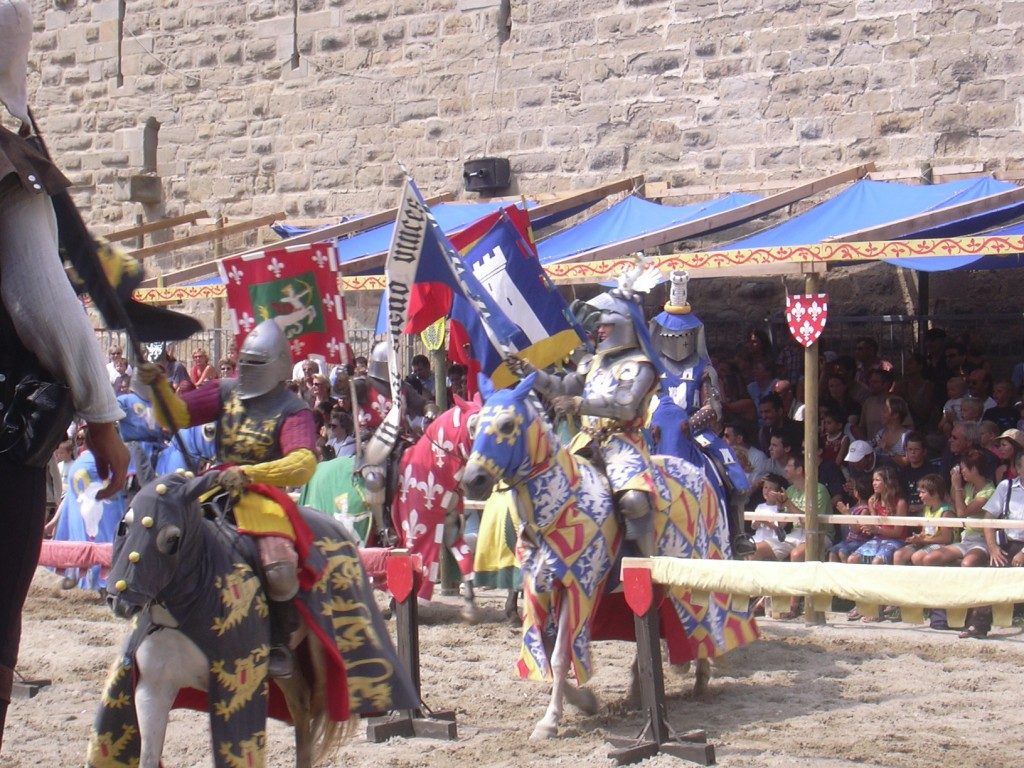
For further information, please contact the Tourist Office as follows
28 rue de Verdun,
11890 Carcassonne
Impasse Agnès de Montpellier
04 68 10 24 30
Book your bungalow in Carcassonne
Book your pitch for tent, caravan or motorhome in Aude
camping carcassonne, carcassonne rentals
Photo credits /image Carcassonne https://commons.wikimedia.org/wiki/File:Carcassonne_21.jpg
Ad Meskens [CC BY-SA 3.0 (https://creativecommons.org/licenses/by-sa/3.0)]
/image knights/
photo presentation Chensiyuan / CC BY-SA (https://creativecommons.org/licenses/by-sa/4.0)
valerie jean/ecrirecoach

